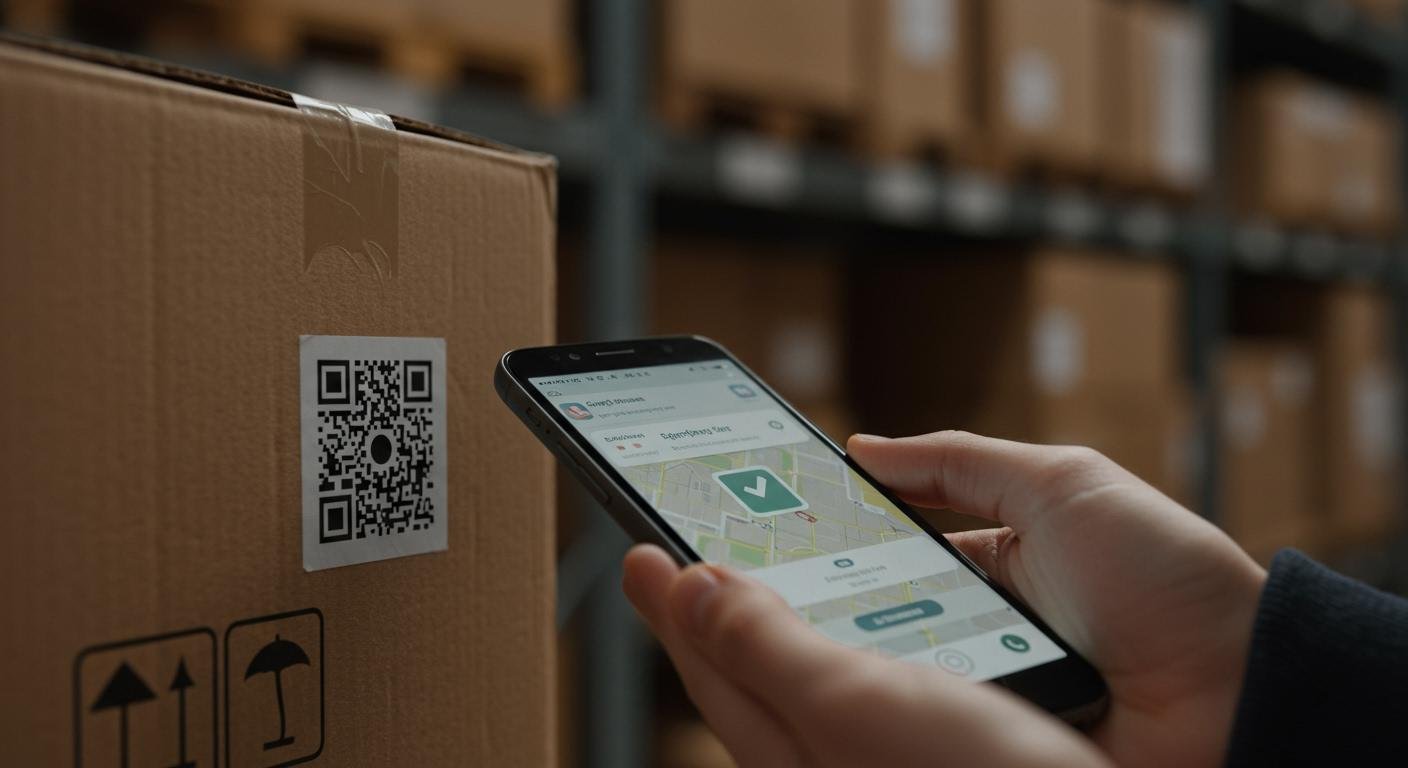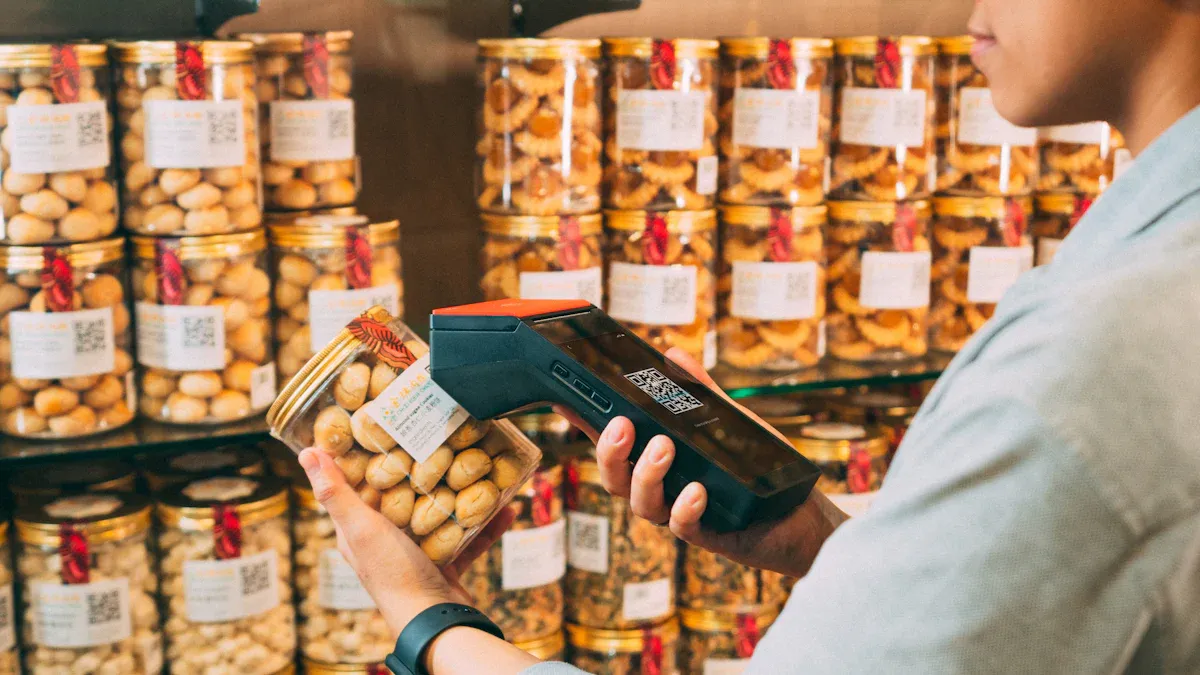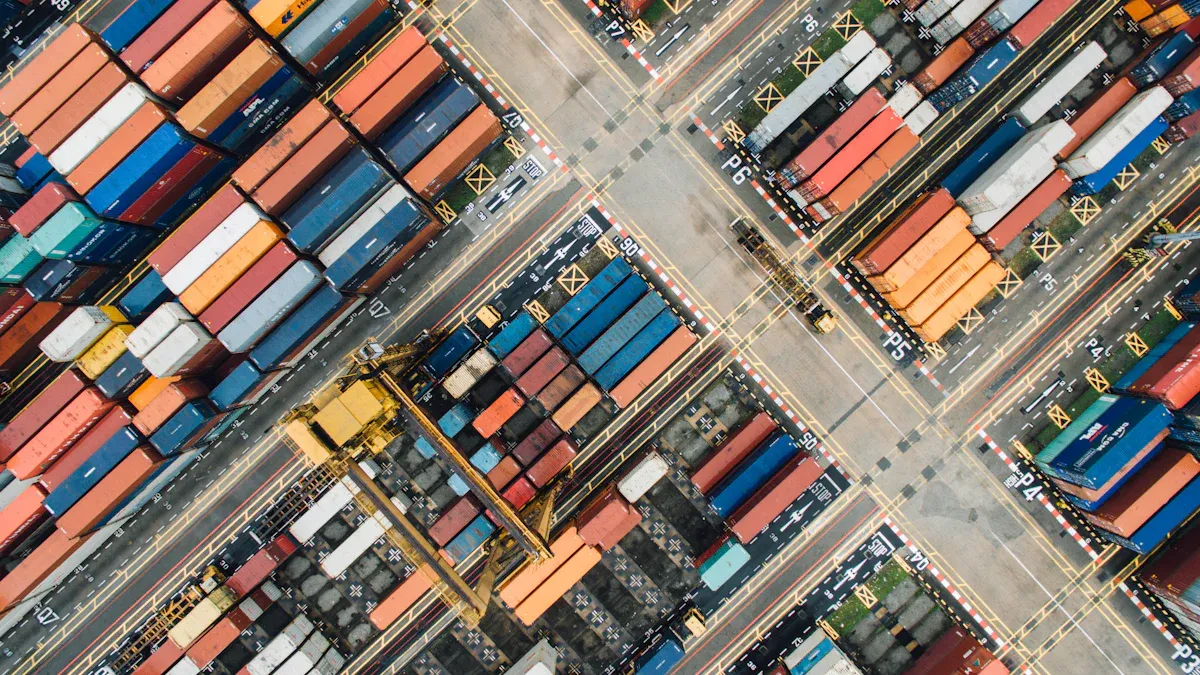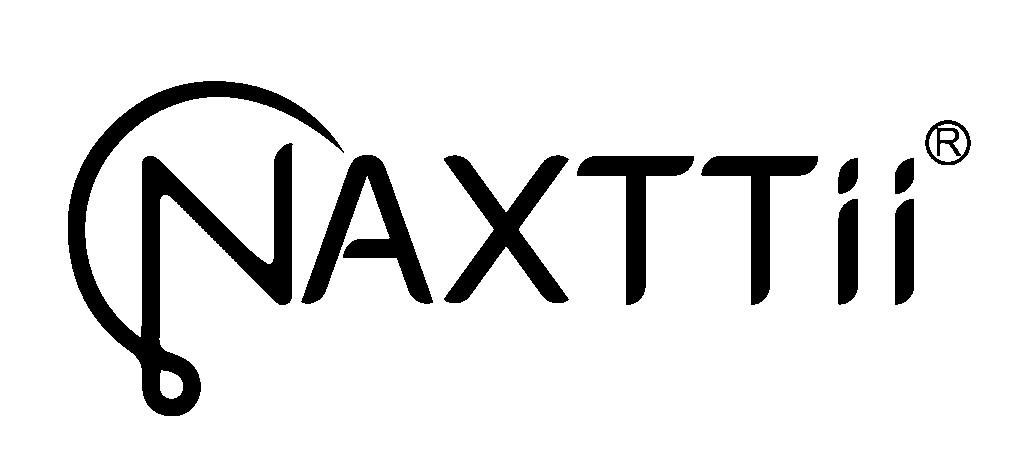Your Guide to Traceability QR Codes on Packaging
Table of Contents

Ever wonder what that square code on your food packaging is for? It’s a Traceability QR Code, your direct link to a product’s story. With over 76% of shoppers saying transparency matters, learning how to use these Traceability QR Codes is a smart move. Your guide to scanning this Traceability QR Code is simple:
- Locate the Traceability QR Code on the item.
- Scan it with your phone’s camera.
- Tap the link to explore the product’s journey.
This simple scanning action unlocks full traceability for the Traceability QR Codes on packaging you see every day.
HOW TO USE QR CODES ON PACKAGING

You now know the “what” and “why” of traceability QR codes. Let’s dive into the “how.” Using QR codes on consumer products is a straightforward process. You can unlock a world of information with just your smartphone. This guide shows you how to use QR codes effectively.
FINDING THE QR CODE
First, you need to locate the QR code on the item’s packaging. Brands place these codes in visible spots for easy scanning. Here are some common places to look:
- Food Items: Check the label on fresh produce, the side of a can, or the back of a snack bag.
- Clothing: Look at the paper tag or the fabric care label sewn inside the garment.
- Electronics: You will often find the QR code on the outside of the box.
For a successful scan, the QR code must be clear. Brands follow specific size and placement guidelines. A QR code should be at least 1 cm x 1 cm (about 0.4 x 0.4 inches), though 2 cm x 2 cm is even better for easy scanning from a short distance. It also needs good contrast. A dark QR code on a light background works best. This simple design choice prevents scanning errors.
SCANNING WITH YOUR PHONE
Your smartphone is the key to unlocking the QR code’s data. Most modern phones make scanning incredibly simple.
- For iPhone (iOS 11 and newer): Open your Camera app. Point it at the QR code. A notification banner will appear. Tap it to open the link.
- For Android: Many Android phones also have a built-in scanner in their Camera app. Just point your camera at the QR code. If that doesn’t work, Google Lens is another great option.
Troubleshooting Your Scan 💡
Sometimes, scanning doesn’t work on the first try. Here are a few quick fixes for common issues:
- Poor Lighting: Move the product into a well-lit area. Too much glare or too little light can prevent your camera from seeing the QR code.
- Blurry Image: Make sure your phone’s camera lens is clean. Hold your phone steady and tap the screen to help it focus on the QR code. Some newer phones struggle with close-up focus, so moving the phone back slightly might help.
- Damaged Code: The packaging might be wrinkled or scratched. Luckily, many QR codes are designed with error correction. This feature allows for a successful scanning even if part of the code is damaged. Try scanning from a different angle.
NAVIGATING THE INFORMATION
After a successful scan, you will land on a mobile webpage. This is your gateway to the product’s unique story and a richer brand experience. Brands that follow best practices for QR code packaging ensure this page loads quickly and is easy to read on your phone.
Here, you can explore all kinds of information. You might find:
- A timeline showing the product’s journey from farm to store.
- Verification of authenticity and quality certifications.
- Interactive content like AR games or personalized style tips.
- Easy reorder buttons or special discount coupons.
For example, you could scan a QR code on a can of tomatoes and see the exact farm where they were grown. Or, a QR code on a wine bottle might unlock a custom music playlist to enjoy with your drink. These features transform simple packaging into an interactive tool, giving you confidence and a deeper connection to the products you buy.
WHAT TRACEABILITY QR CODES REVEAL

Scanning a QR code does more than open a webpage. It unlocks a product’s entire history. Many of these are serialized QR codes. This means each QR code is unique to a specific product batch. It contains key data points that make full traceability possible.
A batch is a group of items made at the same time. A serialized QR code gives each batch its own digital identity. This system uses specific codes to store information.
| Application Identifier (AI) | Data Stored | Example Format |
|---|---|---|
| 10 | Batch Number | Up to 20 characters |
| 15 | Best-before-date | YYMMDD |
This structure allows you to see unique details for the exact item you are holding.
ORIGIN AND SOURCING DATA
Have you ever wanted to know exactly where your food comes from? A QR code can tell you. It provides clear origin and sourcing data. This information builds trust and connects you to the producers.
For products like coffee, a quick scan of the QR code can reveal:
- The specific farm name and region
- The exact harvest date
- Processing methods used for the beans
- Details about the microclimate and altitude
Seafood packaging also uses this technology for powerful traceability. A QR code on a fish fillet can link you to data collected right from the boat. You can see the captain’s name, the gear type used, and the specific fishing area. This transparency helps you confirm the seafood was sourced responsibly. Luxury fashion brands are also adopting this practice. A QR code on a handbag can show you the origin of the leather, giving you confidence in the product’s quality and ethical sourcing.
THE SUPPLY CHAIN JOURNEY
A product’s journey from creation to shelf is its supply chain. Traceability QR codes let you follow this journey step by step. This digital window shows you every key milestone in the product’s life. You can see when an item was manufactured, packaged, and shipped.
Modern tracking systems use real-time data to power this journey.
How Real-Time Tracking Works 🗺️
Companies use technologies like GPS and IoT sensors to monitor products. These tools collect data on a shipment’s location, temperature, and handling. This information is then linked to the product’s QR code. When you scan the QR, you get up-to-the-minute updates.
This level of tracking is especially important for sensitive products. For pharmaceuticals, a QR code tracks critical data like lot numbers and expiration dates. This ensures patient safety and helps prevent errors in the supply chain. You get a complete timeline, from the factory floor to the store shelf.
AUTHENTICITY AND QUALITY
A QR code is also a powerful tool for verifying a product’s authenticity and quality. It helps you confirm that you are buying a genuine item, not a fake. Brands use secure, serialized QR codes to fight counterfeiting. Each QR code is unique. If a code is copied and scanned multiple times in different locations, the brand can flag it as fraudulent. This protects you from fake electronics and luxury goods.
Beyond authenticity, a QR code gives you access to information that proves quality. You can instantly verify important certifications. Platforms like Acviss allow you to scan a QR code and confirm if a product is truly organic or fair-trade. This gives you confidence in the claims made on the packaging.
Finally, the QR code enhances your experience by providing extra content. You can get access to:
- Digital user manuals and assembly guides.
- Complete ingredient lists for food items.
- Tutorial videos showing how to use the product.
This feature turns the product’s packaging into a helpful resource. It provides complete transparency and a richer connection to the brands you choose.
MAKING SMARTER CONSUMER CHOICES
Traceability QR codes give you the power to make better buying decisions. You get direct access to information that goes beyond the label. This helps you confirm product quality, support brands you trust, and connect with them in new ways. The benefits of qr code packaging extend far beyond simple tracking.
CONFIRMING FRESHNESS AND SAFETY
Your safety is a top priority. A QR code on food packaging is a powerful tool for confirming freshness and responding to safety alerts. Brands use dynamic QR codes that can change their destination link. If a product is recalled, a brand can instantly update the QR to lead you to a recall FAQ page. This provides critical information when you need it most.
Freshness at a Glance 🥗
Ready-to-eat brands often use a QR to communicate freshness windows and allergen information. A quick scan gives you confidence in the food you are about to eat.
SUPPORTING YOUR VALUES
You can use your purchasing power to support causes you care about. A QR code helps you verify a brand’s ethical claims. Scanning a QR gives you access to detailed reports on sustainability and fair labor practices. This transparency is one of the key benefits of using a QR.
Many companies use this technology to share their story:
- Puma uses a QR to show its commitment to human rights and sustainable materials.
- Patagonia links its QR to activism initiatives and material details.
- WWF’s OpenSC project uses a QR to prove products come from ethical sources.
This direct access to information lets you choose brands that align with your values.
ENGAGING WITH THE BRAND
Brands use QR codes to build a direct relationship with you. Scanning a QR can unlock exclusive benefits and interactive consumer experiences. This improves customer engagement and helps companies refine their marketing strategies. You might find loyalty rewards, personalized discounts, or even fun mini-games. These marketing strategies with qr code packaging create a two-way conversation. The data from your scan helps brands understand your preferences, leading to better marketing and more relevant offers. These marketing benefits make the QR a vital tool. This is a core part of modern marketing strategies. The QR is a bridge between you and the brand, offering unique marketing opportunities.
You now hold the key to product transparency. Your scanning of a qr unlocks full traceability. This simple scanning action with a qr empowers you. These traceability qr codes offer a direct link to a brand’s story.
Now you can be more than a consumer—you can be an informed one. The next time you shop, find a qr. Scan the qr. See the story behind the qr. This qr is your tool. That qr is your proof. The qr connects you. A qr builds trust. The qr is powerful.
FAQ
Can any qr code trace a product?
Not every qr offers traceability. A standard qr might just lead to a website. A traceability qr is special. This unique qr links to specific batch data, showing you the product’s full journey. You can identify this qr by the detailed information it provides.
What if a qr code is damaged?
Many qr codes have built-in error correction. Your phone can often read a slightly damaged qr. Try cleaning the qr area or scanning from a different angle. Good lighting also helps your phone read the qr successfully.
Do I need a special app to scan a qr?
You probably do not need a special app. Most modern smartphones can scan a qr using the native camera app. Just open your camera and point it at the qr. A link will appear on your screen for you to tap.
Is my data safe when I scan a qr?
Scanning a qr is like clicking a link. It directs you to a webpage. The qr itself does not take your data. However, always be cautious. Only scan a qr from trusted brands to ensure you visit a secure site.

Poseidon
Master of Nutritional Epidemiology, University of Copenhagen, Herbal Functional Nutrition Researcher
Focus: The scientific application of natural active ingredients such as Tongo Ali, Horny Goat Weed, and Maca to sexual health and metabolic regulation.
Core Focus:
Men: Use a combination of Tongo Ali (an energizing factor) + Maca (an energy reserve) to improve low energy and fluctuating libido.
Women: Use a combination of Horny Goat Weed (a gentle regulator) + Maca (a nutritional synergist) to alleviate low libido and hormonal imbalances.
Stressed/Middle-Aged Adults: This triple-ingredient synergy supports metabolism, physical strength, and intimacy.
Product Concept:
Based on traditional applications and modern research (e.g., Tongo Ali promotes testosterone-enhancing enzyme activity, and icariin provides gentle regulation), we preserve core active ingredients and eschew conceptual packaging—using natural ingredients to address specific needs.
Simply put: I'm a nutritionist who understands "herbal actives." I use scientifically proven ingredients like Tongo Ali, Epimedium, and Maca to help you make "sexual health" and "nutritional support" a daily routine.
